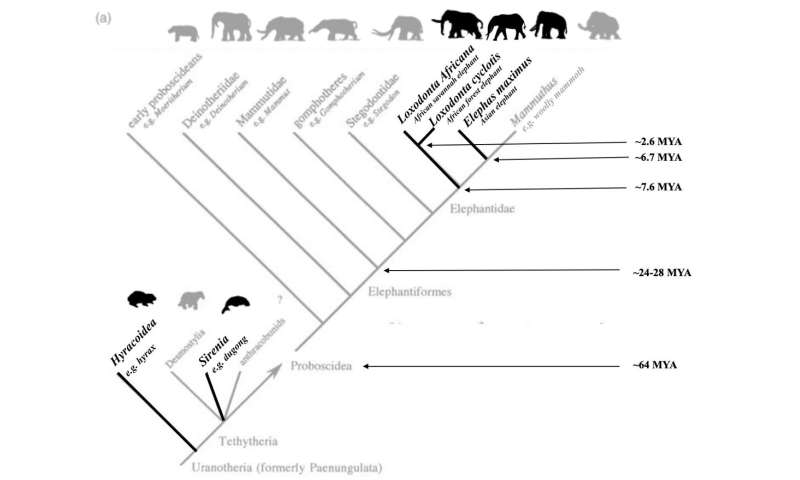Elephants as a new model for understanding human evolution

Humans have complex social behavior, diverse communication skills, and a capacity for highly developed tool use. Researchers argue that human evolution may resemble the process of animal domestication, where less aggressive animals are favoured. In the same way, human evolution may be the result of natural selection for more prosocial and cooperative individuals. Such individuals are more likely to interact with others and form complex communities, in which they can learn from each other.
"The theory of self-domestication is hard to test", says first author Limor Raviv. "This is because only one other species besides humans has been argued to be self-domesticated: bonobos." Could elephants be the first non-primate animal model for self-domestication? Raviv and her colleagues set out to study the similarities between elephants, bonobos, and humans, and followed up with a genetic analysis.
Hallmarks of domestication
The team found that elephants show many hallmarks of domestication. Similar to humans and bonobos, they have low levels of aggression, high levels of empathic and prosocial behaviour, an extended juvenile period, and increased playfulness and curiosity. Elephants form coalitions, 'babysit' calves, offer protection and comfort to others, and help dying or ill members of their herds—and even the occasional outsider. There is also evidence that elephants are both self-aware and sensitive to the needs and wants of others.
Another important hallmark is elephants' ability to learn from each other. Behaviours that are often innate in other animals—such as what to eat or how to raise offspring—are socially transmitted in elephants. Elephants also have a sophisticated multimodal communication system with an extensive vocal repertoire, ranging from trumpets and roars to low-frequency rumbles. For example, elephants in Kenya have different alarm calls for humans and for bees. Their varied and combined calls even show signs of grammar.Finally, the team found several candidate genes associated with domestication in elephants.
Safe environment
The authors propose that self-domestication in elephants could be related to their massive size and relative strength. "This means that elephants are generally less worried about evading or fighting other animals for their survival", Raviv explains. "This kind of 'safe environment' could relax selective pressures for aggression, free cognitive resources, and open up more opportunities for exploration, communication, and play."
"Our hypothesis of self-domestication in elephants has exciting potential for future research in other species", concludes Raviv. "It can inform our understanding of the evolution of prosocial behaviour across evolutionarily distant species, providing important insights into convergent evolution."
More information:
Limor Raviv et al, Elephants as an animal model for self-domestication, Proceedings of the National Academy of Sciences (2023). DOI: 10.1073/pnas.2208607120
Provided by Max Planck Society